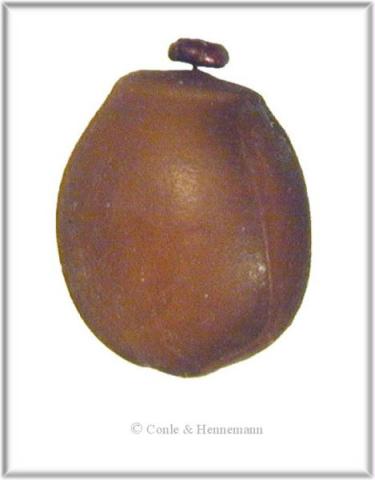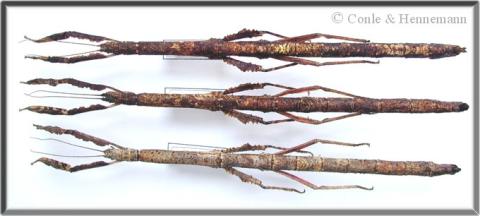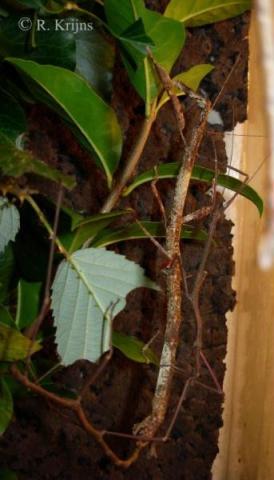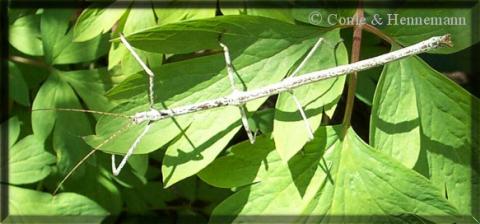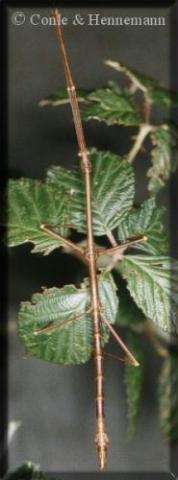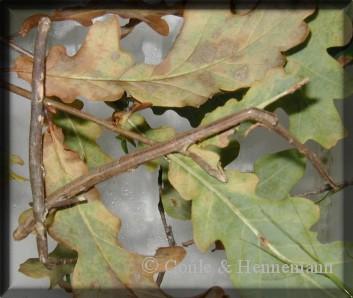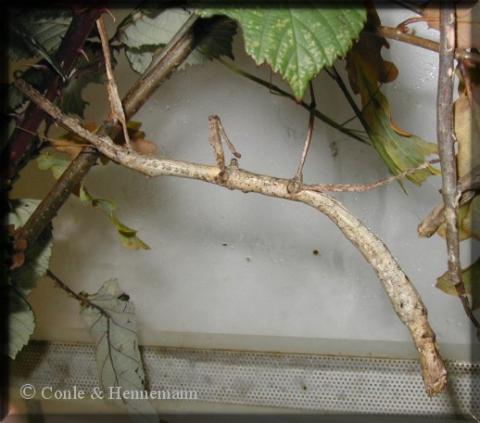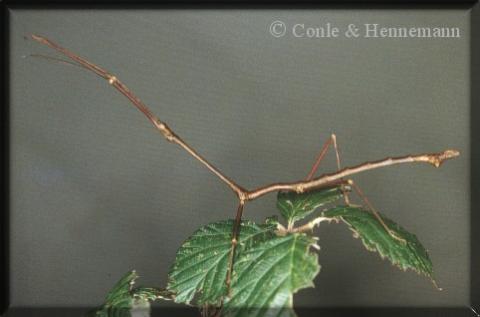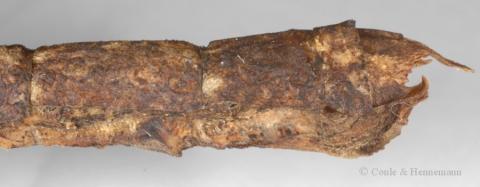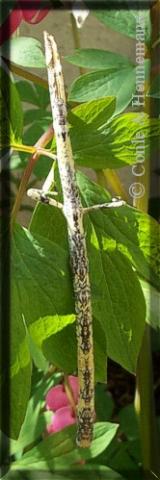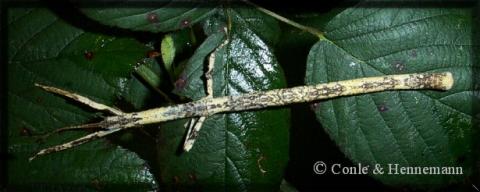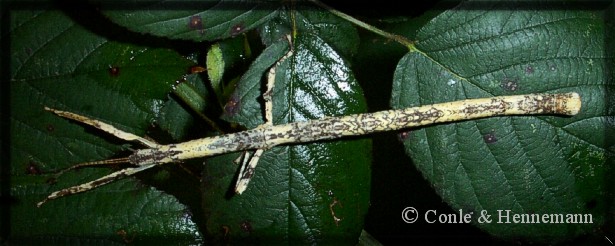
(by Bruno Kneubühler)
General Notes
- Bragg (2001) described this species first as Lonchodes megabeast
_________________
Culture History
- Stock 1: Borneo, NW-Sarawak, Mount Serapi, 1990
- Stock 2: Borneo, NW-Sarawak, Mount Serapi, 1991
- Stock 3: Borneo, NW-Sarawak, Mount Serapi, 1998
_________________
Origin
See Culture History
_________________
Females
- very typical phasmids
- in comparison to the body length, the legs look relativly short
- about 13 - 16 cm long
- color is very variable amongst females
- mainly different combinations of light and dark brown, black and white
- entire body surface is strongly garnulated - giving them a very bark-like appearance
- there are very light and very dark individuals
- inner side of metafemora has a characteristic red color
- forelegs and midlegs have prominent lobes
_________________
Males
- very typical for the genus
- about 10 - 12 cm long
- colouration of the males is uniformly dark reddish brown
- reddish forelegs
_________________
Eggs
- brown
- round
- about 4,5 mm long, with typical capitulum
- incubate the eggs at room temperatures (18-23°C) on humid substrate, e.g. vermiculite or moss (best choice)
- incubation time is about 4 - 6 months at 23°C
_________________
Food Plants
- privet (Ligustrum spp.)
is well accepted by nymphs and adults - bramble (Rubus spp.) and common hazel (Corylus avellana) is also accepted
- most nymphs start to feed on oval-leafed privet (Ligustrum ovalifolium) which should always be offered.
Behavior
nymphs and adults of this species display an astounding stick-camouflage.
typical behavior for females is to hold the hole just with the midlegs.
males are often hanging head over heels holding the body just with the last pair of legs.
males and females can bend the body.
Breeding Notes
an easy to breed and quit big species if oval-leafed privet is available.
keep young nymphs in a normal terrarium (for increased humidity). Older nymphs and adults can be kept in a quite airy cage. Move nymphs to a bigger cage according to their size as they grow up.
adult moult will happen after about 5 to 6 months at about 23°C.
females lay only a few eggs per week, which they just drop to the ground.
nymphs and adults have been sprayed with water 5 to 6 times a week.
for a successful development and moult of younger nymphs a moist paper towel on the cage floor helped to increase humidity. Note that the original habitat of this stock is a very wet tropical forest (Borneo).
